A Comparative Study on the Promoting Effects of Different Tourism Development Models on Rural Revitalization: Case Studies from Two Typical Villages in China
Abstract
1. Introduction
2. Literature Review
3. Effect Analysis of Tourism in Promoting Rural Revitalization
3.1. The Economic Effects Generated by Tourism Development Can Promote the Revitalization of Rural Industries
3.2. The Environmental Effects Generated by Tourism Development Can Promote the Ecological Revitalization of Rural Areas
3.3. The Cultural Effects Generated by Tourism Development Can Promote the Cultural Revitalization of Rural Areas
3.4. The Talent Effect Generated by Tourism Development Can Promote the Revitalization of Rural Talent
3.5. The Management Effects Generated by Tourism Development Can Promote the Revitalization of Rural Organizations
4. Research Design
4.1. Case Study Introduction
4.1.1. Shibadong Village: A “Government-Led Model” with a Focus on Eco-Tourism and Red Tourism
4.1.2. Yuanjia Village: A “Government-Led Model” with a Focus on Eco-Tourism and Red Tourism
4.2. Data Collection
4.3. Research Methodology
4.3.1. Weight Calculation
4.3.2. Effect Value Calculation
4.3.3. Evaluation Criteria
4.3.4. IPA Method
5. Results and Analysis
5.1. PA Results Analysis
5.1.1. Quadrant I (High Importance–High Satisfaction): The Area for Continued Improvement
5.1.2. Quadrant II (Low Importance–High Satisfaction): The Area for Steady Advancement
5.1.3. Quadrant III (Low Importance–Low Satisfaction): The Area for Active Expansion
5.1.4. Quadrant IV (High Importance–Low Satisfaction): The Area for Focused Improvement
5.2. Effect Difference Analysis
5.2.1. The Economic Effect Shows Extremely Significant Differences
5.2.2. The Environmental Effect Shows No Significant Difference
5.2.3. The Cultural Effect Shows Significant Differences
5.2.4. The Talent Effect Shows Extremely Significant Differences
5.2.5. The Management Effect Shows Extremely Significant Differences
5.3. The Mechanism of Impact of Rural Tourism Development Models on the Effect of Rural Revitalization
5.3.1. The Management Effect Shows Extremely Significant Differences
5.3.2. Community Status and Depth of Villager Participation
5.3.3. Government Role and Exogenous Dynamics
6. Conclusions and Discussion
6.1. Discussion
6.2. Conclusions
Author Contributions
Funding
Institutional Review Board Statement
Informed Consent Statement
Data Availability Statement
Acknowledgments
Conflicts of Interest
References
- Liu, Y.; Qiao, J.; Xiao, J.; Han, D.; Pan, T. Evaluation of the Effectiveness of Rural Revitalization and an Improvement Path: A Typical Old Revolutionary Cultural Area as an Example. Int. J. Environ. Res. Public Health 2022, 19, 13494. [Google Scholar] [CrossRef] [PubMed]
- Bjørkhaug, H.; Knickel, K. Rethinking the links between farm modernisation, rural development and resilience. J. Rural Stud. 2018, 59, 194–196. [Google Scholar] [CrossRef]
- Wu, Q.X. The New Banner of the “Three Rural” Work in the New Era: Learning from Comrade Xi Jinping’s Important Exposition on the Implementation of the Rural Revitalization Strategy when He Participated in the Deliberation of the Shandong Delegation. Friends Party Memb. Cadres 2018, 4, 8. [Google Scholar]
- Feng, D.M.; Jin, S.Q. The ‘Preservation’ and ‘Advancement’ of ‘Agriculture, Rural Areas, and Farmers’ Work under the Background of Rural Revitalization. Adm. Manag. Reform 2021, 10, 82–87. [Google Scholar]
- Zhang, Q.; Cao, Z.; Liu, Y. Assessing rural revitalization potential through rural transformation degree and sustainability: A quantitative study of 460 case villages in Lingbao, China. Habitat Int. 2024, 153, 103194. [Google Scholar] [CrossRef]
- Geng, Y.; Liu, L.; Chen, L. Rural revitalization of China: A new framework, measurement and forecast. Socio-Econ. Plan. Sci. 2023, 89, 101696. [Google Scholar] [CrossRef]
- Liu, Y.; Zang, Y.; Yang, Y. China’s rural revitalization and development: Theory, technology and management. J. Geogr. Sci. 2020, 30, 1923–1942. [Google Scholar] [CrossRef]
- Guo, J.F.; Yan, X.Y. Rural Tourism in Ethnic Minority Areas Promotes Common Prosperity. J. South-Cent. Univ. Natl. (Humanit. Soc. Sci.) 2023, 43, 126–133+186–187. [Google Scholar]
- Li, Q.Y. Research on the growth momentum of rural tourism industry. J. China Three Gorges Univ. (Humanit. Soc. Sci.) 2023, 45, 48–52. [Google Scholar]
- Lu, L.; Ren, Y.S.; Zhu, D.C.; Cheng, J.; Yang, X.; Yang, Z.; Yao, G. Research Framework and Prospect of Rural Tourism Guiding Rural Revitalization. Geogr. Res. 2019, 38, 102–118. [Google Scholar]
- Zhang, C.; Shu, B.Y. Community Capacity, Institutional Embeddedness and Rural Tourism Development Model. Gansu Soc. Sci. 2019, 1, 186–192. [Google Scholar]
- Yin, Y.; Pang, J.; Luo, M. A new round of research on the leading mode of tourism development in Tibetan areas of Sichuan. J. Southwest Univ. Natl. (Humanit. Soc. Sci. Ed.) 2015, 36, 149–153. [Google Scholar]
- Zhang, Z.Q.; He, J. The Logic and Way Out of Community-led Rural Tourism Development under the Goal of Common Prosperity: A Case Study of Langde Miao Village in Qiandongnan, Guizhou Province. Areal Res. Dev. 2024, 43, 125–130. [Google Scholar]
- Shen, D. Practice and Reflection on Investment-Consumption-based Reverse Urbanization in the Context of Rural Revitalization: A Case Study Based on H Enterprise. Lanzhou Acad. J. 2023, 8, 150–160. [Google Scholar]
- Wu, M.Y.; Zhang, M.Q.; Wang, L.J. The Path and Mechanism of New Endogenous Rural Development from the Perspective of Symbiosis: A Case Study of Rural Operation in Lin’an District, Hangzhou. J. Nat. Resour. 2023, 38, 2097–2116. [Google Scholar]
- Kaptan Ayhan, Ç.; Cengiz Taşlı, T.; Özkök, F.; Tatlı, H. Land use suitability analysis of rural tourism activities: Yenice, Turkey. Tour. Manag. 2020, 76, 103949. [Google Scholar] [CrossRef]
- Lane, B. What is rural tourism? J. Sustain. Tour. 1994, 2, 7–21. [Google Scholar] [CrossRef]
- Nair, V.; Munikrishnan, U.T.; Rajaratnam, S.D.; King, N. Redefining Rural Tourism in Malaysia: A Conceptual Perspective. Asia Pac. J. Tour. Res. 2015, 20, 314–337. [Google Scholar] [CrossRef]
- Kumar, S.; Shekhar. Technology and innovation: Changing concept of rural tourism—A systematic review. Open Geosci. 2020, 12, 737–752. [Google Scholar] [CrossRef]
- Hua, Q.U.; Jing, L.U.O. Integration of Rural Culture and the Tourism Industry: Literature Review and Research Prospects. Tour. Hosp. Prospect. 2022, 6, 89. [Google Scholar]
- Boukas, N. Rural tourism and residents’ well-being in Cyprus: Towards a conceptualised framework of the appreciation of rural tourism for islands’ sustainable development and competitiveness. Int. J. Tour. Anthropol. 2019, 7, 60–86. [Google Scholar] [CrossRef]
- An, W.; Alarcón, S. How Can Rural Tourism Be Sustainable? A Systematic Review. Sustainability 2020, 12, 7758. [Google Scholar] [CrossRef]
- Liu, Y.; Li, Y. Revitalize the world’s countryside. Nature 2017, 548, 275–277. [Google Scholar] [CrossRef] [PubMed]
- Li, Z.F.; Xia, J.H. Thirty Years of Rural Tourism Research: A Review and Prospect of Domestic and International Literature. J. Huazhong Norm. Univ. (Nat. Sci. Ed.) 2024, 58, 1–12. [Google Scholar]
- Rosalina, P.D.; Dupre, K.; Wang, Y. Rural tourism: A systematic literature review on definitions and challenges. J. Hosp. Tour. Manag. 2021, 47, 134–149. [Google Scholar] [CrossRef]
- Dai, M.L.; Fan DX, F.; Wang, R.; Ou, Y.H.; Ma, X.L. Does rural tourism revitalize the countryside? An exploration of the spatial reconstruction through the lens of cultural connotations of rurality. J. Destin. Mark. Manag. 2023, 29, 100801. [Google Scholar] [CrossRef]
- Yagüe Perales, R.M. Rural tourism in Spain. Ann. Tour. Res. 2002, 29, 1101–1110. [Google Scholar] [CrossRef]
- Li, C.; Fang, Y.; Wang, Y.; Xu, Y.; Zong, Z.; Yang, Y.; Wang, C.; Ou, Z.; Wang, M. How can tourism help to revitalize the countryside? Content analysis based on the case of tourism enabling rural revitalization. Environ. Dev. Sustain. 2024, 26, 20333–20354. [Google Scholar] [CrossRef]
- Hall, D. Rural tourism development in southeastern Europe: Transition and the search for sustainability. Int. J. Tour. Res. 2004, 6, 165–176. [Google Scholar] [CrossRef]
- Zhu, W.; Shang, F. Rural smart tourism under the background of internet plus. Ecol. Inform. 2021, 65, 101424. [Google Scholar] [CrossRef]
- Liu, Y.L.; Yao, Y.; Liu, Y. Research on the Spatial Coupling Relationship between Rural Tourism Development and Poverty Alleviation Resilience in Southwest Ethnic Areas. J. Southwest Univ. (Nat. Sci. Ed.) 2024, 46, 134–145. [Google Scholar]
- Ma, X.L.; Zhao, Q.H. The internal logic of the integration of culture and tourism to empower rural revitalization. Tour. J. 2024, 39, 1–3. [Google Scholar]
- Su, F.; Wang, Z.H. China’s Rural Tourism from the Perspective of Rural Revitalization: Development Model, Dynamic Mechanism and International Experience Reference. World Agric. 2020, 2, 115–119+127. [Google Scholar]
- Shen, S.Z.; Wang, P.F. The logical mechanism, practical dilemma and breakthrough path of rural tourism to help rural revitalization. J. Northwest AF Univ. (Soc. Sci. Ed.) 2022, 22, 72–81. [Google Scholar]
- Li, Y.G.; Wu, S. Mechanism Interpretation and Comparison of Typical Models of Rural Tourism Guiding Rural Revitalization. J. Northwest AF Univ. (Soc. Sci. Ed.) 2022, 22, 82–90. [Google Scholar]
- Zhang, X.; Wang, B. Evaluation of the Targeted Poverty Alleviation Effect of Rural Tourism in Northern Shaanxi. China Agric. Resour. Reg. Plan. 2020, 41, 311–318. [Google Scholar]
- Chen, Z.J.; Xu, F.X. The Influence Effect and Mechanism of Tourism Development in Rural Tourism Destinations on Rural Revitalization: A Case Study of Guanzhong Region. Econ. Geogr. 2022, 42, 231–240. [Google Scholar]
- Zhao, C.H. Mechanism and Countermeasures of Rural Tourism to Promote the Implementation of Rural Revitalization Strategy. Agric. Econ. 2020, 1, 52–54. [Google Scholar]
- Liu, M.K.; Ren, L.L.; Zhou, B.Q. How Can Tourism Development Drive “Effective Governance” in Rural Revitalization. Tour. Sci. 2024, 1–23. [Google Scholar] [CrossRef]
- Manoj, P.K. Impact of Rural Tourism on the Environment and Society: Evidence from Kumbalangi in Kerala, India. Int. J. Adv. Res. Comput. Sci. Manag. 2016, 4, 148–159. [Google Scholar]
- Chen, J.; Zhang, L.Q.; Yang, X.J.; Li, G. The Influence of Rural Tourism Development on Rural Households’ Livelihood and Community Tourism Effect: A Case Study from the Perspective of Tourism Development Model. Geogr. Res. 2017, 36, 1709–1724. [Google Scholar]
- Gao, J.; Wu, B. Revitalizing traditional villages through rural tourism: A case study of Yuanjia Village, Shaanxi Province, China. Tour. Manag. 2017, 63, 223–233. [Google Scholar] [CrossRef]
- Havenmilang, C.; Jones, E. Local leadership for rural tourism development: A case study of Adventa, Monmouthshire, UK. Tour. Manag. Perspect. 2012, 4, 28–35. [Google Scholar]
- Huang, Z.F.; Zhang, Y.G.; Jia, W.T.; Hong, X.T.; Yu, R.Z. The Course of Rural Tourism Research in China and Development Trends in the New Era. J. Nat. Resour. 2021, 36, 2615–2633. [Google Scholar]
- Hua, Y.J.; Ma, X.X. Research on the Construction of Evaluation Index System and Evaluation Method of Rural Revitalization in Jiangsu Province. Rural Econ. Sci. Technol. 2020, 31, 322–324. [Google Scholar]
- Li, C.L.; Li, H.R.; Zhou, M.X. Construction and Empirical Evidence of Evaluation Index System for Rural Revitalization. Stat. Decis. 2022, 38, 66–70. [Google Scholar]
- Li, D.Y.; Liu, Y.H. Discussion on the Development of Rural Tourism and the Protection of the Interests of the “Three Rurals”. Shanxi Agric. Econ. 2023, 6, 38–40. [Google Scholar]
- Yang, A.W.; Li, X.; Ye, X.F. Construction and Evaluation of Rural Revitalization Index System in Tibet. J. Tibet Univ. (Soc. Sci.) 2021, 36, 185–193. [Google Scholar]
- Mao, J.H. Improvement and empirical research on the construction method of rural revitalization evaluation index system. J. Lanzhou Univ. (Soc. Sci.) 2021, 49, 47–58. [Google Scholar]
- Liu, Y.; Wang, F.; Qin, G.W.; Tian, M.H. Measurement and Analysis of Poverty Alleviation Effect of Rural Tourism Development under Different Modes: Based on Data from Poverty-stricken Counties in Anhui Province. For. Econ. 2020, 42, 83–96. [Google Scholar]
- Li, G.; Li, S.Y.; Ping, J.S. Evaluation of Rural Revitalization in Qinghai Province Based on Improved Entropy TOPSIS Grey Correlation Model and Analysis of Obstacle Factors. China Agric. Resour. Reg. Plan. 2021, 42, 115–123. [Google Scholar]
- Shi, Y.D.; Zhuo, L.N. Dynamic Friction and Equilibrium Governance in Rural Tourism in Ethnic Minority Areas. J. Sichuan Norm. Univ. (Soc. Sci. Ed.) 2022, 49, 135–143. [Google Scholar]
- Deng, M.Q.; Chen, J.; Wen, X.; Yang, X.J. Research on the Influencing Factors of Rural Tourism Effect and Community Belonging from the Perspective of Rural Households’ Perception: A Case Study of Yan’an City. China Agric. Resour. Reg. Plan. 2019, 40, 283–292. [Google Scholar]
- Liu, Y.L.; Chiang, J.T.; Ko, P.F. The benefits of tourism for rural community development. Humanit. Soc. Sci. Commun. 2023, 10, 1–12. [Google Scholar] [CrossRef]
- Li, W.; Wang, Y.X.; Ren, S.Q. Institutional Empowerment, Social Capital and Effective Autonomy of Tourism-oriented Villages: A Case Study of Yuanjia Village in Shaanxi Province. J. Northwest AF Univ. (Soc. Sci. Ed.) 2023, 23, 104–114. [Google Scholar]
- Liu, M.K.; Deng, X.G.; Ren, L.L.; Liang, L.J. Theoretical Logic and Mechanism of Tourism-Driven Rural Governance from the Perspective of Urban-Rural Equivalence. J. Cent. China Norm. Univ. (Nat. Sci. Ed.) 2024, 58, 94–102. [Google Scholar]
- Zhang, Z.; Qin, J.X.; Luo, L. Measurement and countermeasures of the integration effect of agriculture, culture and tourism in the upper reaches of the Minjiang River. J. Agric. Resour. Reg. Plan. 2023, 44, 232–246. [Google Scholar]
- Peng, Y.; Liu, W.; Xiong, C. Spatio-temporal divergence and influencing factors of agritourism integration development in Xinjiang, China. Sci. Rep. 2023, 13, 19361. [Google Scholar] [CrossRef]
- Wang, Y.; Zhao, Z.; Xu, M.; Tan, Z.; Han, J.; Zhang, L.; Chen, S. Agriculture–Tourism Integration’s Impact on Agricultural Green Productivity in China. Agriculture 2023, 13, 1941. [Google Scholar] [CrossRef]
- Wu, J.J.; Zhao, X.Y.; Zhao, T. Research on the Countermeasures of Rural Tourism Transformation and Upgrading in Qinzhou City under the Background of Rural Revitalization. Bus. Econ. 2021, 9, 110–112. [Google Scholar]
- Fang, C.M.; Yang, X.Z.; Li, H.; Wang, X.L.; Zhao, H.R. Discussion on the Concept of Environmental Carrying Capacity of Rural Tourism. Mod. Agric. Sci. Technol. 2010, 19, 340–342. [Google Scholar]
- Wang, J.; Zhou, F.; Xie, A. The Impact of Integrated Development of Agriculture and Tourism on Rural Ecological Environment Quality. Wirel. Commun. Mob. Comput. 2022, 2022, 6113324. [Google Scholar] [CrossRef]
- Li, C.X. Beautiful Countryside: The Key to Rural Tourism 2.0 and Beautiful China Strategy. Tour. J. 2016, 31, 3–5. [Google Scholar]
- Yang, Y.; Bao, W.; Liu, Y. Coupling coordination analysis of rural production-living-ecological space in the Beijing-Tianjin-Hebei region. Ecol. Indic. 2020, 117, 106512. [Google Scholar] [CrossRef]
- Ortiz, O.; Rusu, C.; Rusu, V.; Matus, N.; Ito, A. Tourist experience Considering Cultural Factors: A Systematic Literature Review. Sustainability 2024, 16, 10042. [Google Scholar] [CrossRef]
- Wang, Y.; Zhao, Z.; Xu, M.; Tan, Z.; Han, J.; Zhang, L.-X.; Chen, S. Theoretical Cognition and Application Innovation of China’s Rural Tourism Resources under the Goal of Common Prosperity. J. Nat. Resour. 2023, 38, 286–304. [Google Scholar]
- Hu, Y.H. Development and Protection of Rural Tourism and Rural Culture. J. Anhui Agric. Sci. 2009, 37, 10303–10304. [Google Scholar]
- Xue, L.; Kerstetter, D.; Hunt, C. Tourism development and changing rural identity in China. Ann. Tour. Res. 2017, 66, 170–182. [Google Scholar] [CrossRef]
- Tang, M.; Xu, H. Cultural Integration and Rural Tourism Development: A Scoping Literature Review. Tour. Hosp. 2023, 4, 75–90. [Google Scholar] [CrossRef]
- Zhu, L. Research on the Path of Rural Revitalization of Tourism Talent Service from the Perspective of Cultural and Tourism Integration. Rural Econ. Sci. Technol. 2023, 34, 181–184. [Google Scholar]
- Tang, D.J.; Li, Y. An Empirical Study on the Effect of Rural Tourism on Farmers’ Income Increase and Employment. Reform Strategy 2009, 25, 122–125. [Google Scholar]
- Sun, P.; Cao, H. Tourism Development and Rural Land Transfer-Out: Evidence from China Family Panel Studies. Land 2024, 13, 426. [Google Scholar] [CrossRef]
- Pan, L.R. The Boosting Role of Rural Food Culture on Rural Tourism in the Context of Rural Revitalization. China Rice 2021, 27, 155. [Google Scholar]
- Chen, X.; Zhang, Q.; Zhang, R.T.; Sheng, Y.Q.; Shu, X.Y. Optimization Strategy of Rural Tourism Talent Training Path under Rural Revitalization Strategy: A Case Study of Hunan Province. Res. Agric. Mod. 2024, 45, 71–78. [Google Scholar]
- Wang, H.Z.; Pei, L.L. Research on the Path of Tourism to Promote Rural Revitalization in Old Revolutionary Areas from the Perspective of Empowerment. Mod. Bus. 2021, 35, 105–107. [Google Scholar]
- Sun, Y.L.; Wang, C.H.; Chen, W. Research on the Development Effect of Rural Tourism in Ethnic Areas of Gansu Province under the Background of Rural Revitalization. J. Northwest Univ. Natl. (Philos. Soc. Sci.) 2021, 5, 82–91. [Google Scholar]
- Yang, X. Construction and Application of Evaluation Index System of China Rural Revitalization Composite Index. Reg. Econ. Rev. 2023, 1, 54–65. [Google Scholar]
- Shen, J.B.; Wang, Y.K.; Zhu, M.; Wang, K. Construction and Empirical Evidence of Evaluation Index System for Rural Revitalization Level. Trans. CSAE 2020, 36, 236–243. [Google Scholar]
- Zhang, Q.; Li, S.Q. Construction of Evaluation Index System for Rural Revitalization in China under the Goal of Common Prosperity. Gansu Soc. Sci. 2022, 5, 25–34. [Google Scholar]
- Zhang, T.; Li, M.R.; Xu, Y.M. Construction and Empirical Research of Evaluation Index System for Rural Revitalization. Manag. World 2018, 34, 99–105. [Google Scholar]
- Song, L.T.; Bai, Y.X. Construction of Evaluation Index System of Rural Revitalization Level and Decomposition of Regional Differences. Stat. Decis. 2022, 38, 17–21. [Google Scholar]
- Yin, S.; Yang, J.; Mao, Y. Research on the Assessment of TOPSIS Method Based on Entropy Weight in Enterprises’ Selection of Raw Materials. Model. Simul. 2023, 12, 5147–5155. [Google Scholar] [CrossRef]
- Roszkowska, E. Multi-criteria Decision Making Models by Applying the TOPSIS Method to CRISP and Interval Data. Mult. Criteria Decis. Mak. 2011, 6, 200–230. [Google Scholar]
- Yin, C.F. Research on the coupling and coordination of high-quality development of rural tourism and rural revitalization: A case study of Anhui Province. Soc. Sci. 2023, 1, 57–64. [Google Scholar]
- Wei, X.Y.; Mao, X.F.; Tang, Z.X.; Xue, H.J. An IPA-Based Analysis on Tourist Satisfaction in the Three-River Headwater Region. Mod. Manag. 2020, 10, 459. [Google Scholar] [CrossRef]
- Zhang, J.; Jiang HZ, Y.; Shi, P.F. Research on the Model and Effect of Tourism Poverty Alleviation from the Perspective of Beautiful Countryside: A Case Study of Zhangwan District, Shiyan City, Hubei Province. Hubei Soc. Sci. 2017, 6, 60–68+115. [Google Scholar]
- Zhong, Y.P.; Tang, L.R.; Hu, P.B. Mechanism and Empirical Analysis of the Integration of Agriculture and Tourism to Promote the Optimization and Upgrading of Rural Industrial Structure: A Case Study of National Demonstration Counties of Leisure Agriculture and Rural Tourism. China Rural Econ. 2020, 7, 80–98. [Google Scholar]
- Lin, B. A Study on the Rejuvenation of Rural Culture and Tourism Development—A Case Study of Yuanjia Village, Xianyang, Shaanxi Province. Serv. Sci. Manag. 2019, 8, 1–9. [Google Scholar]
- Tong, T.; Zheng, Y.; Rui, X. Research on the External Communication Strategy of Chinese Rural Culture from the Perspective of New Media: A Case Study of Yunnan Ethnic Village. Journal. Commun. 2024, 12, 318–322. [Google Scholar]
- Tang, C.C.; Zhou, Z.J.; Jiang, L.; Liu, L. Rural Revitalization and High-quality Development of Cultural Tourism: Theoretical and Empirical Research. J. Resour. Ecol. 2024, 15, 521–527. [Google Scholar]
- Wang, X.D. Research on the Development of Rural Tourism Industry under the Background of Rural Revitalization. Serv. Sci. Manag. 2023, 12, 457–461. [Google Scholar]
- Liu, T.C.; Wang, L.N. The Dynamic Mechanism and Path Choice of the Revitalization of Traditional Villages Tourism under the Background of the Integration of Culture and Tourism—Kaihui Village in Changsha County as an Example. Serv. Sci. Manag. 2024, 13, 709–719. [Google Scholar]
- Ma, Y.; Wu, B.; Jia, R.R. Research on the Performance Evaluation of Rural Revitalization Guided by Rural Tourism: A Case Study of Wangwu Village, Taiyuan City. China Agric. Resour. Reg. Plan. 2021, 42, 124–131. [Google Scholar]
- Wu, W.Z.; Qiao, M. Research Progress of Migrant Operators in Rural Tourism: A General Logic Based on China’s Institutional Context. Hum. Geogr. 2023, 38, 21–28+191. [Google Scholar]
- Li, M.; Yao, S. Governance System, Quality of Village Cadres and Village-level Governance Ability. J. South China Agric. Univ. (Soc. Sci.) 2021, 20, 105–117. [Google Scholar]
- Wu, Y.J. Research on the Collaborative Governance Mechanism of Multiple Stakeholders in Rural Tourism System. Agric. Econ. 2021, 12, 58–59. [Google Scholar]
- Wang, H.; Wang, H. Research on the Tourism-Promoting Rural Revitalisation Model Based on Grounded Theory: The Case of Shibadong Village in Huayuan County, Hunan Province. Sustainability 2024, 16, 10942. [Google Scholar] [CrossRef]
- Iqbal, A.; Ramachandran, S.; Siow, M.L.; Subramaniam, T.; Afandi, S.H.M. Meaningful community participation for effective development of sustainable tourism: Bibliometric analysis towards a quintuple helix model. J. Outdoor Recreat. Tour. 2022, 39, 1–14. [Google Scholar] [CrossRef]
- Jiang, T.Q.; Dong, P.H. Research Progress and Enlightenment of Poverty Alleviation in Rural Tourism in China. Tour. Res. 2021, 13, 11. [Google Scholar]
- Li, H.Q.; Zou, A.Q.; Yao, Q. Evolutionary Game Analysis of Stakeholder Behavior in Rural Tourism Development. Rural Econ. 2020, 2, 83–88. [Google Scholar]
- Wang, K.L.; Li, G. Stakeholder Conflict and Reciprocal Governance Mechanism in Rural Tourism: A Discussion Based on Symbiosis Theory. Soc. Sci. 2023, 2, 53–58+80. [Google Scholar]
- Wei, X.L.; Shen, H.J. Research on the development potential of rural tourism to promote the development of modern agriculture in Hebei Province. Agric. Econ. 2022, 1, 24–26. [Google Scholar]
- Zhang, W.X.; Yuan, Y. Research on the Mechanism of Rural Tourism Industry to Promote Rural Economic Development. Agric. Econ. 2023, 4, 143–144. [Google Scholar]
- Huang, X.J.; Zhang, K.; Xiong, Z.Y.; Hu, B. Rural Tourism, Structural Transformation and Farmers’ Income Growth: Empirical Evidence from the “National Demonstration County of Leisure Agriculture and Rural Tourism”. World Agric. 2023, 3, 71–84. [Google Scholar]
- Zhang, H.C.; Shu, B.Y. Institutional Embeddedness: The Evolutionary Logic of Tourism Development Model in Traditional Ethnic Villages. J. Yunnan Univ. Natl. (Philos. Soc. Sci.) 2019, 36, 88–94. [Google Scholar]
- Feng, N.P.; Wei, F.F.; Zhang, K.H.; Gu, D.X. Innovating Rural Tourism Targeting Poverty Alleviation through a Multi-Industries Integration Network: The Case of Zhuanshui Village, Anhui Province, China. Sustainability 2018, 10, 2162. [Google Scholar] [CrossRef]
- Szmytkie, R.; Latocha, A.; Sikorski, D.; Tomczak, P.; Kajdanek, K.; Miodońska, P. Tourist boom and rural revival—Case study of Klodzko Region (SW Poland). J. Mt. Sci. 2022, 19, 909–924. [Google Scholar] [CrossRef]
- Wang, S.; Luo, C.; Dong, S. Study on Evaluation of Rural Tourism Development Based on IRT Framework. Sustain. Dev. 2024, 14, 813–819. [Google Scholar] [CrossRef]
- Zhou, C.C.; He, Y.Y.; Cao, T. Research on the Impact of Government-led Poverty Alleviation Model on Rural Tourism Development: A Case Study of Three Ethnic Villages in Yunnan Province. J. Nanjing Univ. Financ. Econ. 2019, 4, 88–97. [Google Scholar]
- Guo, H. The Choice of the Institutional Change Path of Rural Tourism Community from the Perspective of Stakeholders: A Case Study of Wuyuan County, Jiangxi Province. J. Jiangxi Agric. Univ. (Soc. Sci.) 2011, 10, 116–123. [Google Scholar]
- Zhang, M. Research on the Development of Community-Led Endogenous Rural Tourism —Taking Lujia Village in Zhejiang Province as an Example. Sustain. Dev. 2024, 14, 1246–1251. [Google Scholar] [CrossRef]
- Zhang, L.; Fan, D. Research on Community Transformation and Governance in Rural Revitalization: A Case Study of R Town, Q City. J. Southwest Univ. Natl. (Humanit. Soc. Sci. Ed.) 2019, 40, 208–213. [Google Scholar]
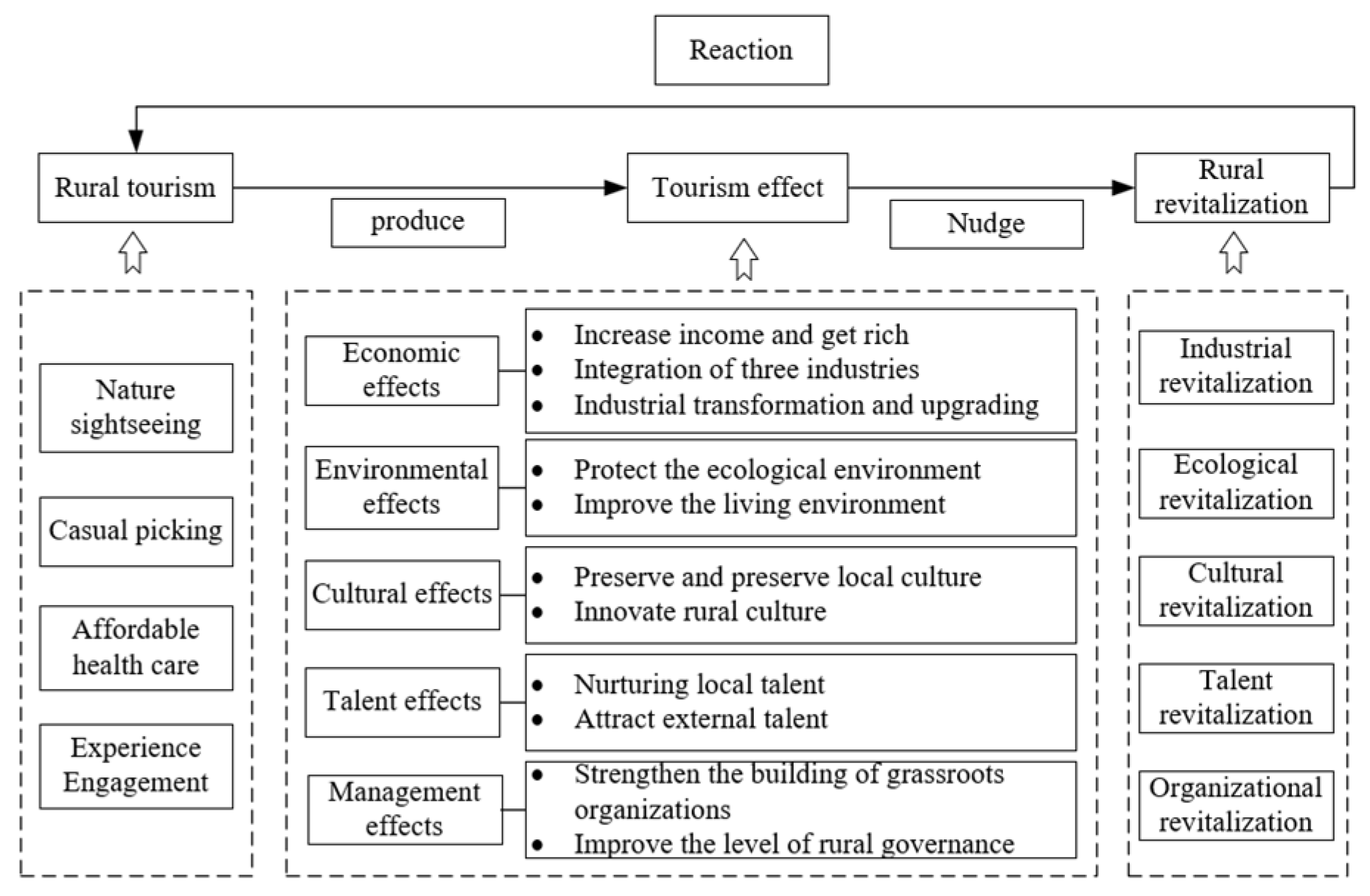
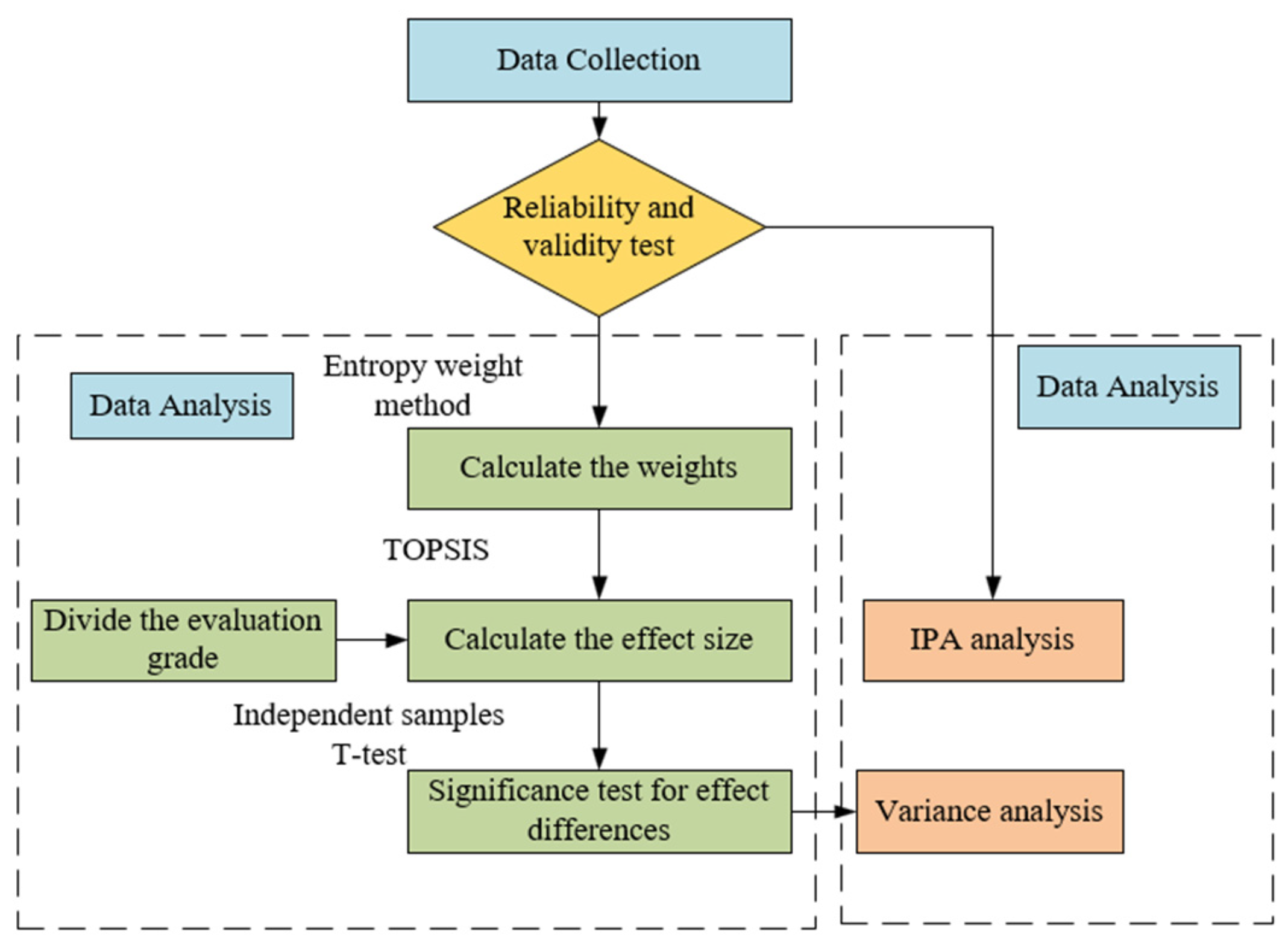
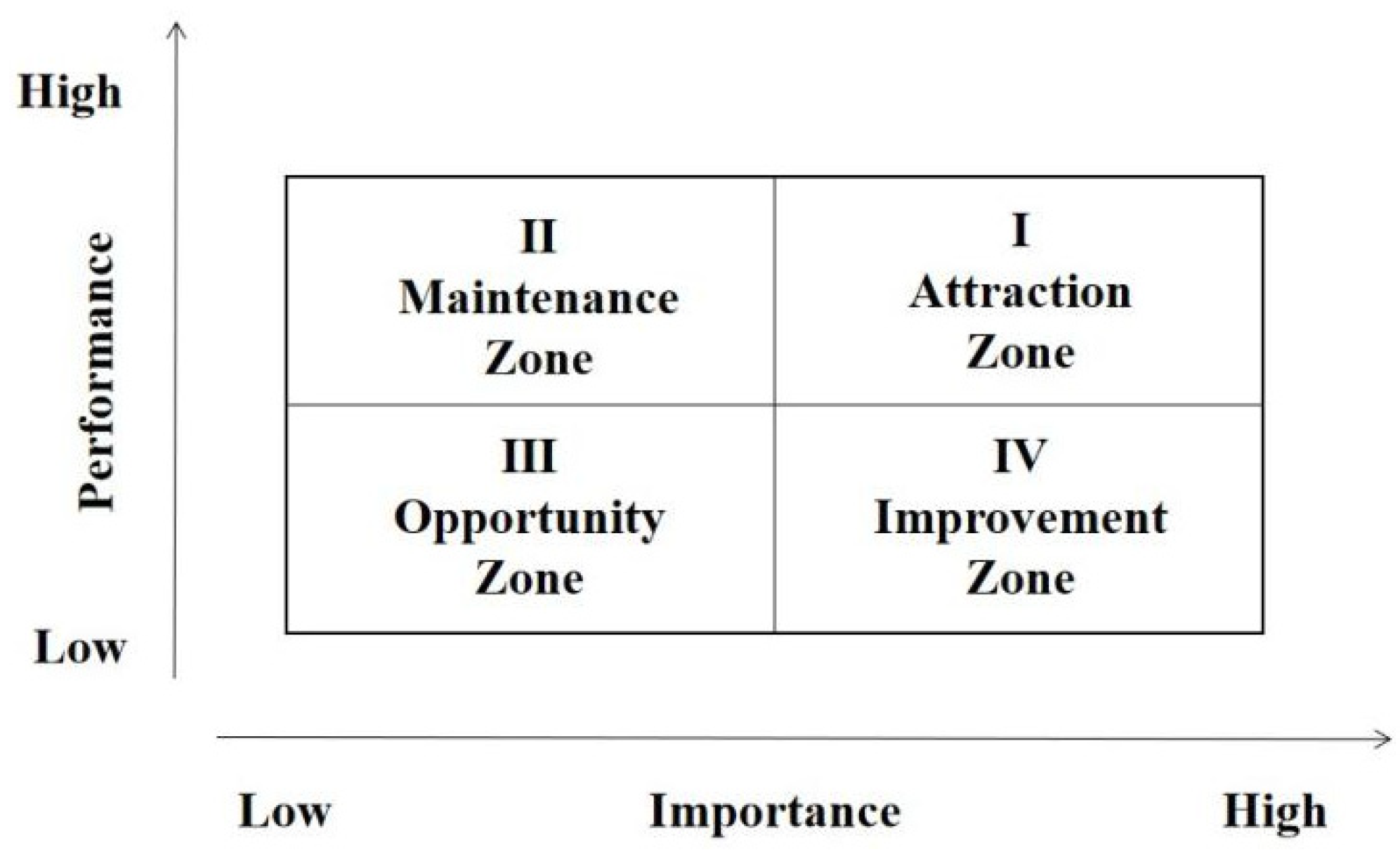
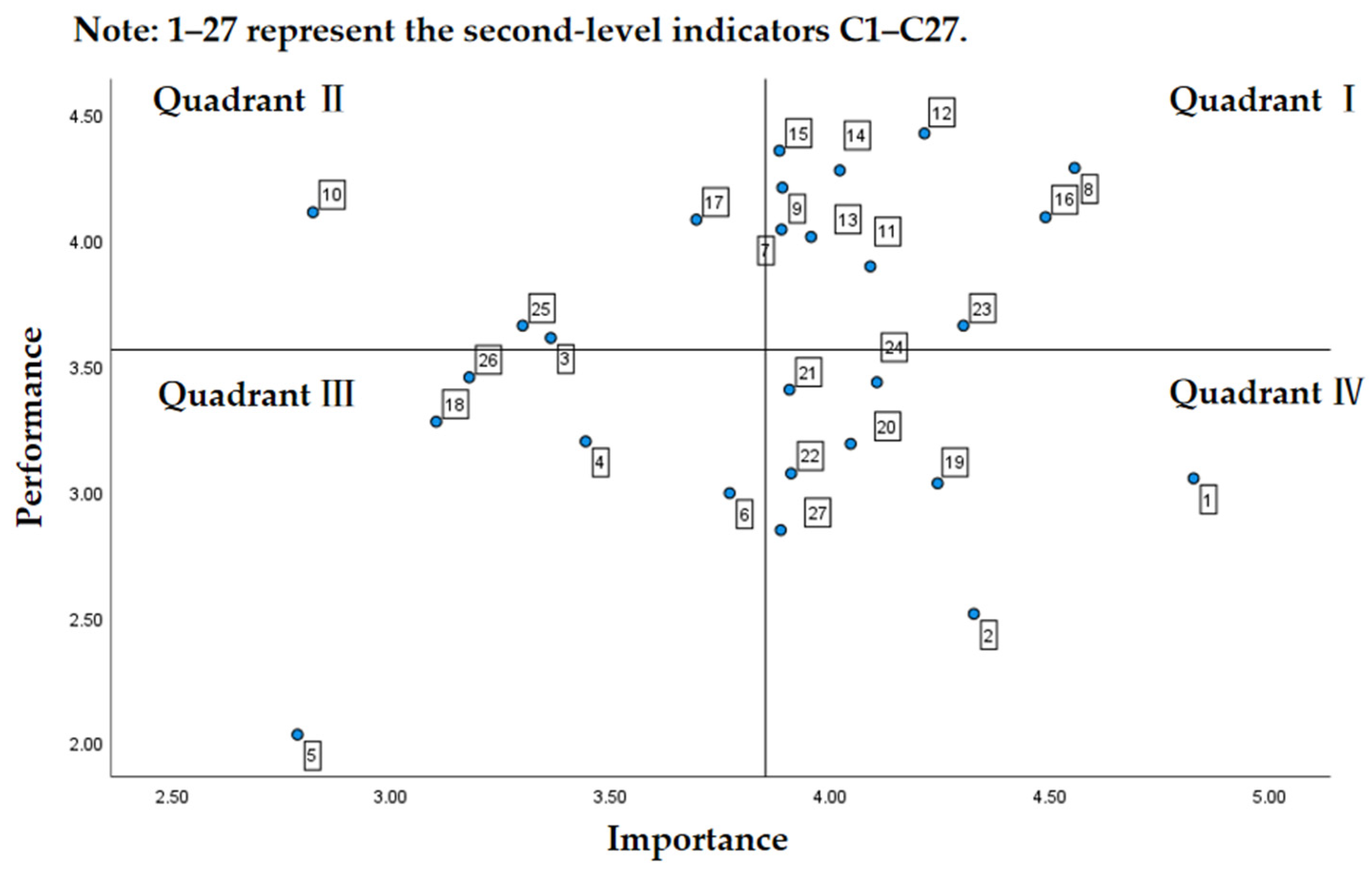
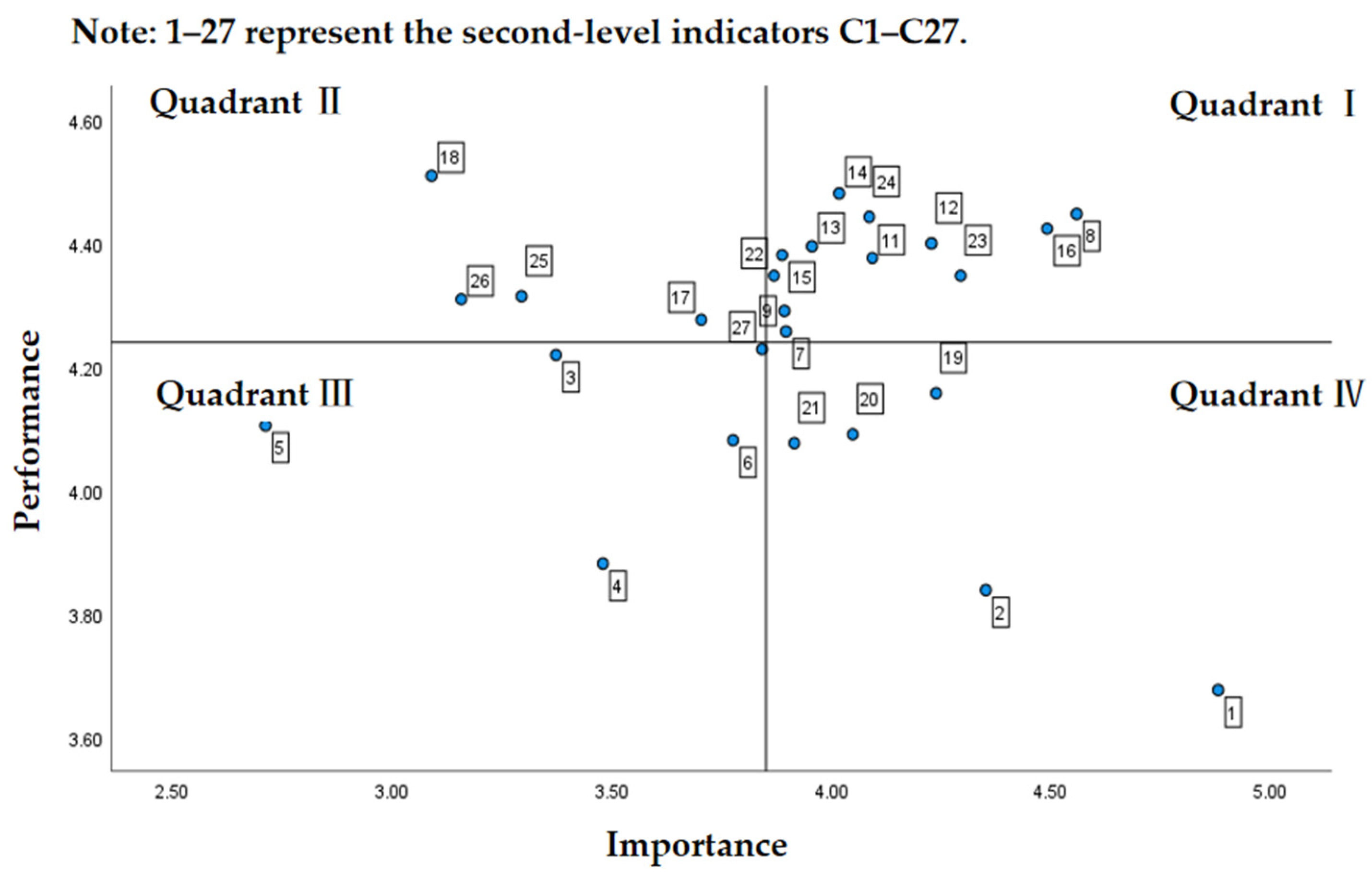
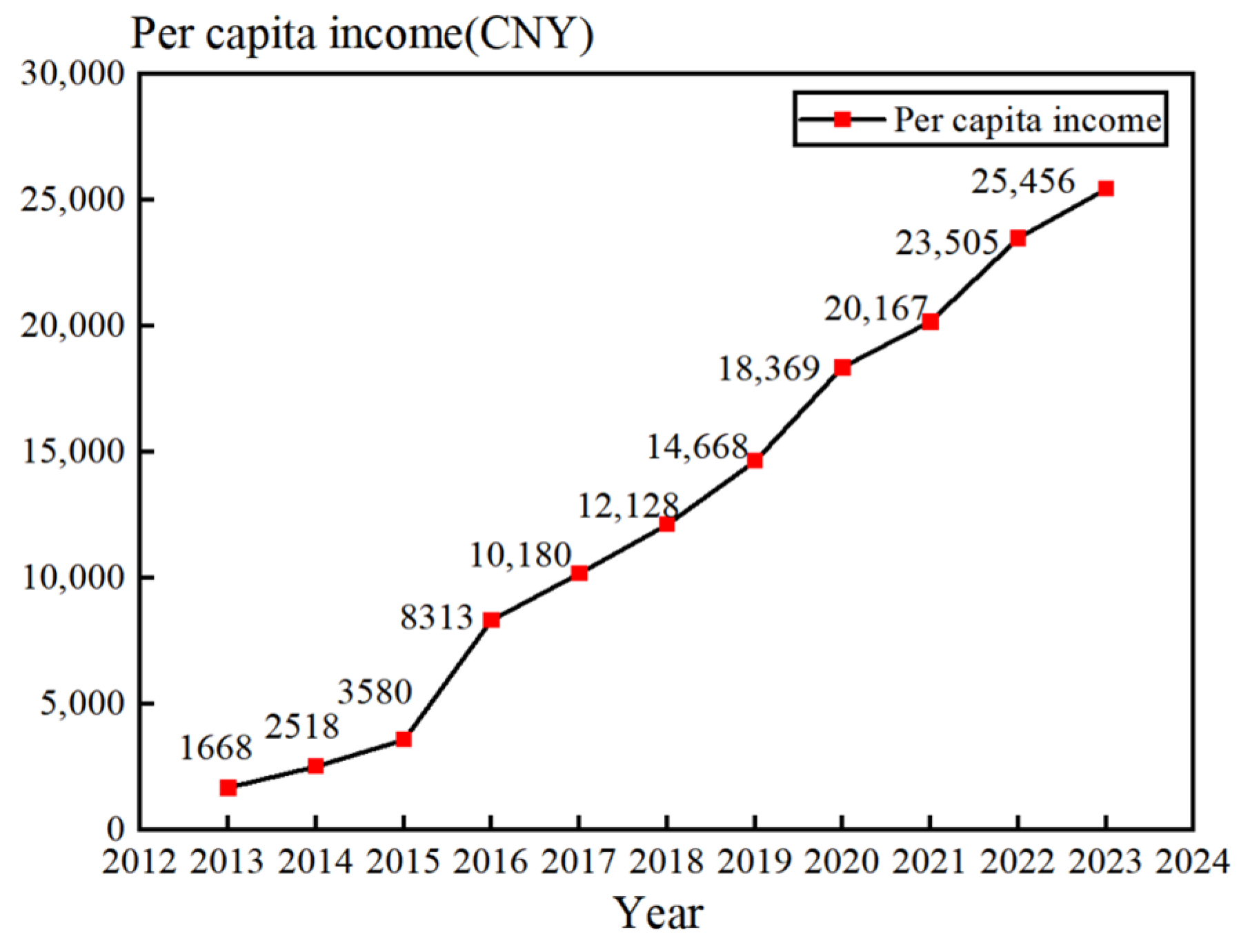
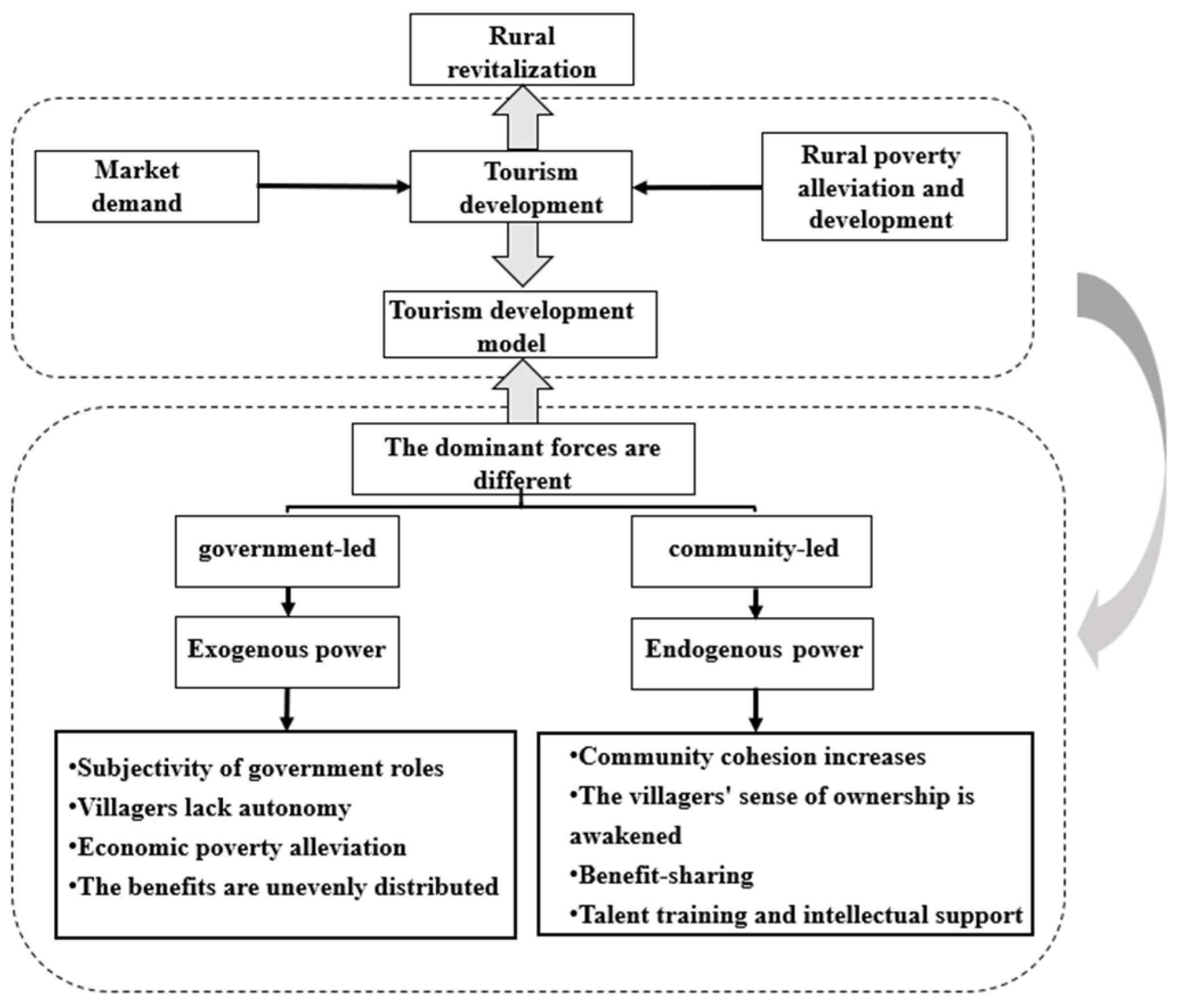
| First-Level Indicators (B) | Second-Level Indicators (C) | Source |
|---|---|---|
| Economic Effects (B1) | Increase in Resident Income (C1) | [46] |
| Increase in Tourism Employment Opportunities (C2) | [36,76] | |
| Extension of the Tourism Industry Chain (C3) | Reference 3.1 Analysis of economic effects | |
| Improvement in the Conversion Rate of Tourism Resources (C4) | Reference 3.1 Analysis of economic effects | |
| Reduction in Energy Consumption per Unit of Tourism Output (C5) | [46,77] | |
| Upgrading and Transformation of Rural Industries (C6) | Reference 3.1 Analysis of economic effects | |
| Optimization of Rural Industrial Structure (C7) | Reference 3.1 Analysis of economic effects | |
| Environmental Effects (B2) | Continuous Improvement of the Ecological Environment (C8) | [45,53] |
| Prominence of Rural Landscape Features (C9) | [76] | |
| Reduction in Tourism Carbon Emissions (C10) | [78,79] | |
| Continuous Improvement of the Living Environment (C11) | [80] | |
| Increasing Improvement of Infrastructure (C12) | [49] | |
| Cultural Effects (B3) | Enhancement of Villagers’ Cultural Literacy (C13) | [37,81] |
| Strengthening of Villagers’ Cultural Confidence (C14) | Reference 3.3 Analysis of cultural effects | |
| Elevation of Villagers’ Level of Civilization (C15) | [37,76] | |
| Preservation, Inheritance, and Development of Intangible Cultural Heritage (C16) | Reference 3.3 Analysis of cultural effects | |
| Increase in Rural Cultural and Recreational Resources and Facilities (C17) | [48,49] | |
| Enhancement of Tourism Cultural Influence (C18) | Reference 3.3 Analysis of cultural effects | |
| Talent Effects (B4) | Growth and Strengthening of Rural Professional Talent Teams (C19) | [37,45] |
| Improvement of Quality in Rural Professional Talents (C20) | Reference 3.4 Analysis of talent effects | |
| Returnees Actively Engaging in Entrepreneurship (C21) | [37] | |
| Social Talents Actively Participating in Rural Construction (C2) | [37] | |
| Management Effects (B5) | Strengthening Cohesion of Grassroots Party Organizations (C23) | Reference 3.3 Analysis of management effects |
| Improvement in the Governance Level of Grassroots Organizations (C24) | [45] | |
| Optimization of Grassroots Organizational Structure (C25) | [49] | |
| Enhancement of Rural Organizational Degree (C26) | [37,45] | |
| Strengthening of Villagers’ Voice in Tourism (C27) | [76] |
| Case Study Site | Shibadong Village | Yuanjia Village |
|---|---|---|
| Development Entity | Government-Led | Community-Led |
| Operating Entity | Local Tourism Companies, Tourism Cooperatives, and Villagers | Village Committee, Village Tourism Management Company, and Industry Associations |
| Tourism Resources | Ecological Resources, Revolutionary Resources, Agritourism, and Ethnic Customs | Guanzhong Culture and Specialty Catering |
| Advantage Differences |
|
|
| Revenue Distribution |
|
|
| Case Study Site | Shibadong Village | Yuanjia Village |
| Research Timeline | 22 June 2023–25 June 2023 | 10 June 2023–13 June 2023 |
| Research Methodology | Questionnaire Survey, Structured Interviews, Unstructured Interviews | |
| Number of Questionnaires Distributed | 105 | 215 |
| Number of Valid Questionnaires | 102 | 210 |
| Questionnaire Response Rate | 97.14% | 97.67% |
| Shibadong Village | Yuanjia Village | ||
|---|---|---|---|
| Cronbach’s Alpha Coefficient | 0.953 | 0.931 | |
| Bartlett’s Test of Sphericity | KMO Value | 0.851 | 0.865 |
| χ2 approx | 2643.468 | 3260.589 | |
| df | 351 | 351 | |
| p Value | 0.000 | 0.000 |
| Shibadong Village | Yuanjia Village | ||||
|---|---|---|---|---|---|
| Survey Items | Category of Options | Number of People | Proportion (%) | Number of People | Proportion (%) |
| Gender | Men | 43 | 42.16% | 103 | 49.05% |
| Women | 59 | 57.84% | 107 | 50.95% | |
| Age | 22 years old and under | 7 | 6.86% | 12 | 5.71% |
| 23–35 years old | 48 | 47.06% | 85 | 40.48% | |
| 36–45 years old | 24 | 23.53% | 34 | 16.19% | |
| 46–60 years old | 21 | 20.59% | 52 | 24.76% | |
| Over 60 years old | 2 | 1.96% | 27 | 12.86% | |
| Educational Attainment | Junior high school and below | 40 | 39.22% | 58 | 27.62% |
| High School/Technical Secondary School | 25 | 24.51% | 71 | 33.81% | |
| junior colleges | 18 | 17.65% | 45 | 21.43% | |
| undergraduate | 19 | 18.63% | 35 | 16.67% | |
| Graduate student or above | 0 | 0% | 1 | 0.48% | |
| Residency (Local or Non-local) | Yes | 72 | 70.59% | 90 | 42.86% |
| No | 30 | 29.41% | 120 | 57.14% | |
| Annual Household Income | Less than CNY 30,000 | 24 | 23.53% | 31 | 14.76% |
| CNY 30,000–50,000 | 36 | 35.29% | 60 | 28.57% | |
| CNY 50,000–100,000 | 30 | 29.41% | 70 | 33.33% | |
| CNY 100,000–150,000 | 8 | 7.84% | 31 | 14.76% | |
| More than CNY 150,000 | 4 | 3.92% | 18 | 8.57% | |
| Tourism relevance | Direct relevant | 60 | 58.82% | 132 | 62.86% |
| Indirect relevant | 23 | 22.55% | 39 | 18.57% | |
| irrelevant | 19 | 18.63% | 39 | 18.57% | |
| Shibadong Village | ||||
|---|---|---|---|---|
| First-Level Indicators (B) | Relative Weights of First-Level Indicators | Second- Level Indicator (C) | Relative Weights of Second-Level Indicators | Original Entropy Weight Method |
| Economic Effects (B1) | 0.4033 | (C1) | 0.0806 | 0.0271 |
| (C2) | 0.178 | 0.0599 | ||
| (C3) | 0.0875 | 0.0295 | ||
| (C4) | 0.1255 | 0.0423 | ||
| (C5) | 0.3539 | 0.1192 | ||
| (C6) | 0.1099 | 0.037 | ||
| (C7) | 0.0645 | 0.0217 | ||
| Environmental Effects (B2) | 0.1496 | (C8) | 0.2147 | 0.0227 |
| (C9) | 0.2246 | 0.0237 | ||
| (C10) | 0.1997 | 0.0211 | ||
| (C11) | 0.2281 | 0.0241 | ||
| (C12) | 0.1329 | 0.014 | ||
| Cultural Effects (B3) | 0.1464 | (C13) | 0.1523 | 0.0224 |
| (C14) | 0.1446 | 0.0212 | ||
| (C15) | 0.1165 | 0.0171 | ||
| (C16) | 0.1577 | 0.0232 | ||
| (C17) | 0.1891 | 0.0278 | ||
| (C18) | 0.2398 | 0.0352 | ||
| Talent Effects (B4) | 0.1619 | (C19) | 0.2536 | 0.044 |
| (C20) | 0.265 | 0.046 | ||
| (C21) | 0.2294 | 0.0398 | ||
| (C22) | 0.2517 | 0.0437 | ||
| Management Effects (B5) | 0.1388 | (C23) | 0.1518 | 0.0361 |
| (C24) | 0.1641 | 0.039 | ||
| (C25) | 0.135 | 0.0321 | ||
| (C26) | 0.1842 | 0.0438 | ||
| (C27) | 0.3649 | 0.0867 | ||
| Yuanjia Village | ||||
|---|---|---|---|---|
| First-Level Indicators (B) | Relative Weights of First-Level Indicators | Second- Level Indicator (C) | Relative Weights of Second-Level Indicators | Original Entropy Weight Method |
| Economic Effects (B1) | 0.4033 | (C1) | 0.1992 | 0.0803 |
| (C2) | 0.2101 | 0.0847 | ||
| (C3) | 0.0986 | 0.0398 | ||
| (C4) | 0.1981 | 0.0799 | ||
| (C5) | 0.1127 | 0.0454 | ||
| (C6) | 0.1066 | 0.043 | ||
| (C7) | 0.0747 | 0.0301 | ||
| Environmental Effects (B2) | 0.1496 | (C8) | 0.1658 | 0.0248 |
| (C9) | 0.1776 | 0.0266 | ||
| (C10) | 0.2941 | 0.044 | ||
| (C11) | 0.178 | 0.0266 | ||
| (C12) | 0.1846 | 0.0276 | ||
| Cultural Effects (B3) | 0.1464 | (C13) | 0.153 | 0.0224 |
| (C14) | 0.1201 | 0.0176 | ||
| (C15) | 0.1465 | 0.0214 | ||
| (C16) | 0.1674 | 0.0245 | ||
| (C17) | 0.2538 | 0.0371 | ||
| (C18) | 0.1593 | 0.0233 | ||
| Talent Effects (B4) | 0.1619 | (C19) | 0.2361 | 0.0382 |
| (C20) | 0.3016 | 0.0488 | ||
| (C21) | 0.3017 | 0.0488 | ||
| (C22) | 0.1606 | 0.0026 | ||
| Management Effects (B5) | 0.1388 | (C23) | 0.1778 | 0.0274 |
| (C24) | 0.1396 | 0.0194 | ||
| (C25) | 0.203 | 0.0282 | ||
| (C26) | 0.1745 | 0.0242 | ||
| (C27) | 0.305 | 0.0423 | ||
| First-Level Indicators (B) | Second-Level Indicators (C) | Effect Score | |
|---|---|---|---|
| The Effect of Shibadong Village Tourism in Promoting Rural Revitalization 0.55 Higher level | Economic Effects (B1) 0.4303 Moderate Level | (C1) | 0.51 |
| (C2) | 0.4107 | ||
| (C3) | 0.6123 | ||
| (C4) | 0.5356 | ||
| (C5) | 0.3499 | ||
| (C6) | 0.4981 | ||
| (C7) | 0.691 | ||
| Environmental Effects (B2) 0.7274 Top level | (C8) | 0.7227 | |
| (C9) | 0.7118 | ||
| (C10) | 0.7027 | ||
| (C11) | 0.6659 | ||
| (C12) | 0.7649 | ||
| Cultural Effects (B3) 0.6881 Top level | (C13) | 0.6858 | |
| (C14) | 0.7264 | ||
| (C15) | 0.7453 | ||
| (C16) | 0.697 | ||
| (C17) | 0.6865 | ||
| (C18) | 0.5513 | ||
| Talent Effects (B4) 0.5328 Higher level | (C19) | 0.5054 | |
| (C20) | 0.533 | ||
| (C21) | 0.5718 | ||
| (C22) | 0.5124 | ||
| Management Effects (B5) 0.552 Higher level | (C23) | 0.6134 | |
| (C24) | 0.5769 | ||
| (C25) | 0.6181 | ||
| (C26) | 0.578 | ||
| (C27) | 0.4759 |
| First-Level Indicators (B) | Second-Level Indicators (C) | Effect Score | |
|---|---|---|---|
| The Effect of Yuanjia Village Tourism in Promoting Rural Revitalization 0.7059 Top level | Economic Effects (B1) 0.6316 Higher level | (C1) | 0.627 |
| (C2) | 0.6516 | ||
| (C3) | 0.7407 | ||
| (C4) | 0.6609 | ||
| (C5) | 0.7161 | ||
| (C6) | 0.6372 | ||
| (C7) | 0.7559 | ||
| Environmental Effects (B2) 0.7165 Top level | (C8) | 0.7938 | |
| (C9) | 0.6997 | ||
| (C10) | 0.7206 | ||
| (C11) | 0.7795 | ||
| (C12) | 0.7829 | ||
| Cultural Effects (B3) 0.7001 Top level | (C13) | 0.7829 | |
| (C14) | 0.7564 | ||
| (C15) | 0.7271 | ||
| (C16) | 0.7895 | ||
| (C17) | 0.7494 | ||
| (C18) | 0.7479 | ||
| Talent Effects (B4) 0.6783 Top level | (C19) | 0.6573 | |
| (C20) | 0.71 | ||
| (C21) | 0.7086 | ||
| (C22) | 0.712 | ||
| Management Effects (B5) 0.7076 Top level | (C23) | 0.7145 | |
| (C24) | 0.7443 | ||
| (C25) | 0.7026 | ||
| (C26) | 0.7072 | ||
| (C27) | 0.7385 |
| Levene’s Test for Equality of Variances | t-Test for Equality of Means | |||||||||
|---|---|---|---|---|---|---|---|---|---|---|
| F | Sig. | t | df | Sig. (Two-Tailed) | Mean Difference | Standard Error | Difference 95% Confidence Interval | |||
| Lower Limit | Upper Limit | |||||||||
| Economic Effects | Assumption of Equal Variances | 1.879 | 0.196 | −3.536 | 12 | 0.004 ** | −0.16883 | 0.04775 | −0.27286 | −0.06480 |
| Assumption of Unequal Variances | −3.536 | 8.358 | 0.007 | −0.16883 | 0.04775 | −0.27806 | −0.05960 | |||
| Environmental Effects | Assumption of Equal Variances | 1.024 | 0.341 | −1.686 | 8 | 0.130 | −0.04170 | 0.02474 | −0.09874 | 0.01534 |
| Assumption of Unequal Variances | −1.686 | 7.789 | 0.131 | −0.04170 | 0.02474 | −0.09901 | 0.01561 | |||
| Cultural Effects | Assumption of Equal Variances | 1.523 | 0.245 | −2.606 | 10 | 0.026 * | −0.07682 | 0.02947 | −0.14249 | −0.01114 |
| Assumption of Unequal Variances | −2.606 | 6.159 | 0.039 | −0.07682 | 0.02947 | −0.14849 | −0.00515 | |||
| Talent Effects | Assumption of Equal Variances | 0.034 | 0.861 | −8.339 | 6 | <0.001 *** | −0.16632 | 0.01995 | −0.21513 | −0.11752 |
| Assumption of Unequal Variances | −8.339 | 5.917 | <0.001 | −0.16632 | 0.01995 | −0.21530 | −0.11735 | |||
| Management Effects | Assumption of Equal Variances | 1.763 | 0.221 | −5.522 | 8 | <0.001 *** | −0.14896 | 0.02697 | −0.21116 | −0.08676 |
| Assumption of Unequal Variances | −5.522 | 4.855 | 0.003 | −0.14896 | 0.02697 | −0.21893 | −0.07899 | |||
Disclaimer/Publisher’s Note: The statements, opinions and data contained in all publications are solely those of the individual author(s) and contributor(s) and not of MDPI and/or the editor(s). MDPI and/or the editor(s) disclaim responsibility for any injury to people or property resulting from any ideas, methods, instructions or products referred to in the content. |
© 2025 by the authors. Licensee MDPI, Basel, Switzerland. This article is an open access article distributed under the terms and conditions of the Creative Commons Attribution (CC BY) license (https://creativecommons.org/licenses/by/4.0/).
Share and Cite
Wang, H.; Lu, X. A Comparative Study on the Promoting Effects of Different Tourism Development Models on Rural Revitalization: Case Studies from Two Typical Villages in China. Sustainability 2025, 17, 714. https://doi.org/10.3390/su17020714
Wang H, Lu X. A Comparative Study on the Promoting Effects of Different Tourism Development Models on Rural Revitalization: Case Studies from Two Typical Villages in China. Sustainability. 2025; 17(2):714. https://doi.org/10.3390/su17020714
Chicago/Turabian StyleWang, Huizhan, and Xinru Lu. 2025. "A Comparative Study on the Promoting Effects of Different Tourism Development Models on Rural Revitalization: Case Studies from Two Typical Villages in China" Sustainability 17, no. 2: 714. https://doi.org/10.3390/su17020714
APA StyleWang, H., & Lu, X. (2025). A Comparative Study on the Promoting Effects of Different Tourism Development Models on Rural Revitalization: Case Studies from Two Typical Villages in China. Sustainability, 17(2), 714. https://doi.org/10.3390/su17020714







